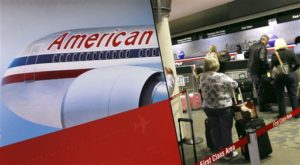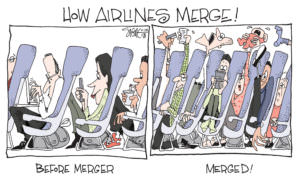Southwest Resisted Plan for Accelerated Safety Test
The airline opposed a recommendation by the manufacturer to require ultrasonic inspections of certain fan blades within 12 months, saying it needed more time to do the work.DALLAS — Southwest Airlines sought more time last year to inspect fan blades like the one that snapped off during one of its flights Tuesday in an engine failure that left a passenger dead.
The airline opposed a recommendation by the engine manufacturer to require ultrasonic inspections of certain fan blades within 12 months, saying it needed more time to conduct the work.
Southwest made the comments last year after U.S. regulators proposed making the inspections mandatory. The Federal Aviation Administration has not yet required airlines to conduct the inspections but said late Wednesday that it would do so in the next two weeks.
The manufacturer’s recommendation for more inspections followed an engine blowup on a 2016 Southwest flight. On Tuesday, an engine on another Southwest jet exploded over Pennsylvania, and debris hit the plane. A woman was sucked partway out of the jet when a window shattered. She died later from her injuries.
The plane, a Boeing 737 bound from New York to Dallas with 149 people aboard, made an emergency landing in Philadelphia.
Passenger Andrew Needum, a Texas firefighter, said Thursday that he was helping his family and other passengers with their oxygen masks when he heard a commotion behind him. His wife nodded that it was OK for Needum to leave his family to help the injured woman.
Texas rancher Tim McGinty, of Hillsboro, said Tuesday that he and Needum struggled to pull 43-year-old Jennifer Riordan back into the plane. Needum and retired school nurse Peggy Phillips began administering CPR for about 20 minutes, until the plane landed.
Needum on Thursday declined to detail his rescue efforts out of respect for Riordan’s family.
“I feel for her family. I feel for her two kids, her husband, the community that they lived in,” an emotional Needum told reporters. “I can’t imagine what they’re going through.”
Federal investigators are still trying to determine how the window came out of the plane. Riordan, who was in a window seat in Row 14, was wearing a seat belt.
Philadelphia’s medical examiner said the banking executive and mother of two from Albuquerque, New Mexico, died from blunt-impact injuries to her head, neck and torso.
Investigators said the blade that broke off mid-flight and triggered the fatal accident was showing signs of metal fatigue — microscopic cracks from repeated use.
The National Transportation Safety Board also blamed metal fatigue for the engine failure on a Southwest plane in Florida in 2016 that was able to land safely.
That incident led manufacturer CFM International, a joint venture of General Electric Co. and France’s Safran SA, to recommend in June 2017 that airlines conduct ultrasonic inspections of fan blades on many Boeing 737s.
The FAA proposed making the recommendation mandatory in August but never issued a final decision.
On Wednesday, the FAA said it would issue a directive in the next two weeks to require the ultrasonic inspections of fan blades on some CFM56-7B engines after they reach a certain number of takeoffs and landings. Blades that fail inspection would need to be replaced.
It was not immediately clear how many planes would be affected. Last year, the FAA estimated that an order would cover 220 engines on U.S. airlines. That number could be higher now because more engines have hit the number of flights triggering an inspection.
Southwest announced its own program for similar inspections of its 700-plane fleet over the next month. United Airlines said Wednesday it has begun inspecting some of its planes.
American Airlines has about 300 planes with that type of engine, and Delta has about 185. It will not be clear until the FAA issues its rule how many will need inspections.
Tuesday’s emergency broke a string of eight straight years without a fatal accident involving a U.S. airliner.
“Engine failures like this should not occur,” Robert Sumwalt, chairman of the NTSB, said Wednesday.
Sumwalt expressed concern about such a destructive engine failure but said it was too soon to draw any conclusions about the safety of CFM56 engines or the entire fleet of Boeing 737s, the most popular airliner ever built.
It is unknown whether the FAA’s original directive would have forced Southwest to quickly inspect the engine that blew up.
Southwest CEO Gary Kelly said the plane was inspected on Sunday and nothing appeared out of order. A spokeswoman said it was a visual inspection.
The NTSB’s Sumwalt said, however, that the kind of wear seen where the missing fan blade broke off would not have been visible just by looking at the engine.
___
AP Airlines Writer David Koenig reported from Dallas.
Your support matters…Independent journalism is under threat and overshadowed by heavily funded mainstream media.
You can help level the playing field. Become a member.
Your tax-deductible contribution keeps us digging beneath the headlines to give you thought-provoking, investigative reporting and analysis that unearths what's really happening- without compromise.
Give today to support our courageous, independent journalists.






You need to be a supporter to comment.
There are currently no responses to this article.
Be the first to respond.